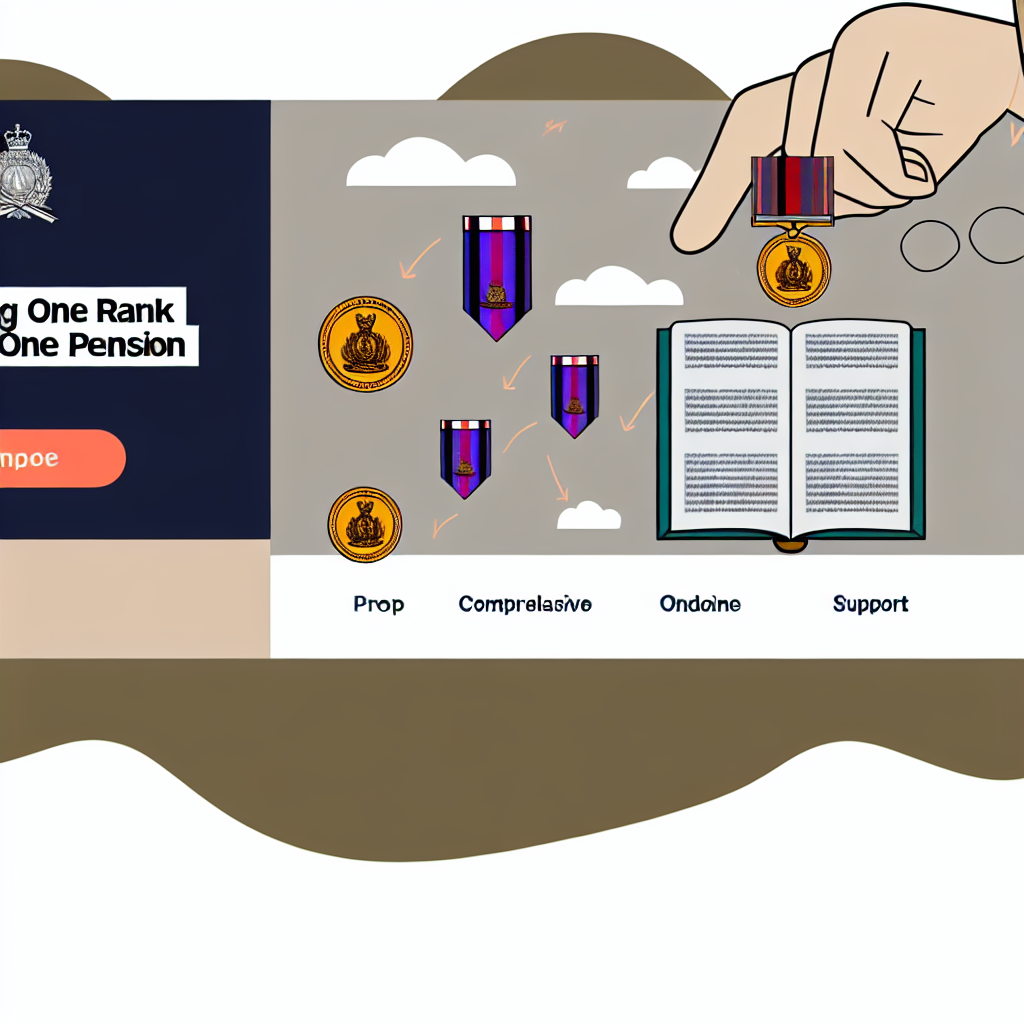Copyright @ 2023 www.digimitr.com. All rights reserved.

Understanding One Rank One Pension (OROP): A Comprehensive Guide to the Ministry of Defence’s Veteran Support Scheme
Explore the details of the government scheme titled “Understanding One Rank One Pension (OROP): A Comprehensive Guide to the Ministry of Defence’s Veteran Support Scheme”. This initiative is managed by the relevant ministry and focuses on providing benefits to eligible beneficiaries.
Here is a comprehensive overview:
Introduction
One Rank One Pension (OROP) is a pivotal initiative launched by the Government of India, specifically under the aegis of the Ministry of Defence, aimed at providing financial support to ex-servicemen. The principle underlying OROP is simple: any retired military personnel, regardless of when they served, should receive the same pension as those who retired at the same rank, with the same length of service. This scheme seeks to assure our veterans that their sacrifices for the nation will be recognized and compensated fairly, thereby ensuring their dignity and welfare in retirement.
Eligibility Criteria
The eligibility for OROP is focused on all Armed Forces personnel who have retired, including officers and personnel below officer rank (PBOR). To be eligible, retirees must have completed a minimum of 20 years of service. Importantly, the scheme applies to those who retired voluntarily as well. Specific categories like pre-2006 retirees are emphasized, as the 6th Pay Commission had previously altered the pension scales, resulting in discrepancies for individuals who had retired before this date.
Additionally, any service personnel who was discharged due to medical reasons after completing their tenure of 20 years also qualifies for OROP. The scheme is intended to provide fair treatment, thus ensuring no veteran is left behind based on their retirement timelines.
Key Features and Benefits
One of the notable features of OROP is that it corrects disparities in pensions among military personnel of the same rank. The scheme is designed to periodically revise pension rates, ensuring that pensions grow alongside the salary scales of serving personnel. The advantage here is that retired individuals do not lag behind in their financial returns as military salaries increase over time.
Among the benefits, OROP not only provides uniform pension rates but also seeks to address the issues stemming from inflation and cost of living increases. It is expected to support around 2.5 million retirees, thereby significantly enhancing their quality of life. Furthermore, the scheme is backed by a structured implementation, aiming to deliver pensions without bureaucratic delays, thus ensuring a more responsive and responsible service to veterans.
Application Process
Applying for OROP is a streamlined process aimed at minimizing any hassles that veterans may face. Eligible individuals must visit their nearest military pension office and submit an application form along with required documentation. The necessary documents typically include proof of service, identity proof, and any previous pension details.
Once submitted, the application is reviewed by a pension officer, who assesses eligibility and validates the provided information. Subsequent processing involves verification through the respective military records, ensuring a seamless transition into the OROP framework. In some instances, individuals can also apply via online portals if available, leading to quicker processing times.
Funding and Budget
The financial outline for implementing OROP falls under the broader defense budget of the Government of India. The scheme incurs significant expenditure, estimated at thousands of crores annually, intending to uplift the financial standing of veterans. This funding scheme remains a subject of discussion within budgetary allocations, reflecting the government’s commitment to the welfare of ex-servicemen.
In recent budgets, substantial allocations have been made, primarily focusing on bringing settled pension rates in line with current norms. Budgetary provisions have aimed to bypass bureaucratic delays in disbursement processes, focusing on veterans’ timely access to their dues.
Achievements or Impact
The rollout of OROP has had a marked impact on the lives of veterans. Many have reported improved living standards, with pension increases having a direct influence on their financial independence. Enhanced pensions have also allowed veteran families to invest in education, health care, and other essential services that bolster their overall quality of life.
Moreover, the implementation of OROP has served to strengthen the sentiment of respect and acknowledgment towards veterans. It has instilled confidence amongst ex-servicemen regarding their role in societal welfare, fostering an environment where they feel valued even post-service.
Challenges (if any)
Despite its many benefits, OROP is not without challenges. The most pronounced issue concerns the implementation and disbursement logistics. There have been reports of delays in pension disbursal, which frustrate many veterans. Bureaucratic hurdles may still remain in some cases, although efforts have been made to streamline this process.
Additionally, the financial sustainability of funding OROP raises questions for future budgets. As veteran demographics evolve, the increasing number of beneficiaries may strain financial resources, necessitating regular assessments of the scheme’s economic viability.
Recent Updates
In the recent sanctions made by the government, specific updates include revisions to pension amounts, aimed at indexing them to current pay scales. Efforts have been made to ensure that OROP remains dynamically updated to keep pace with inflation and rising living costs. In certain developments, the government is also exploring additional benefits in healthcare and other welfare schemes specifically targeting veterans.
Interventions like grievance redressal mechanisms have been enhanced to address veteran complaints more effectively, ensuring a comprehensive and supportive framework surrounding OROP. Ongoing discussions about further enhancements indicate the government’s commitment to refining the scheme continually, ensuring it meets the evolving needs of veterans.
Conclusion
One Rank One Pension is a landmark initiative that exemplifies the government’s recognition of the sacrifices made by the armed forces of India. By ensuring that military personnel enjoy equal pension benefits irrespective of their retirement timeframes, OROP fortifies the principles of fairness and equality. While challenges in implementation and sustainability exist, ongoing efforts indicate a commitment to overcoming these hurdles. Through this initiative, the government is not only enhancing the economic status of veterans but also fostering a deeper societal appreciation for their contributions, ultimately creating a more just system for those who have served the nation.
FAQ
What is the primary objective of One Rank One Pension?
The primary objective of OROP is to ensure that all ex-servicemen of the same rank and service length receive uniform pension benefits, irrespective of when they retired, thus ensuring fairness and equity in pensions.
How does OROP affect the pension amount of veterans?
Under OROP, the pension amount for veterans is aligned with the basic pay of current serving personnel, ensuring that their pensions are periodically revised and reflective of current economic conditions.
Who is eligible to apply for OROP?
Any military personnel who has completed a minimum of 20 years of service is eligible to apply for OROP, including those who retired voluntarily and those discharged under medical circumstances.
For more information, check out official government site,
Official government website or relevant source not provided.
Stay updated on related schemes and initiatives using hashtags: #Understanding #Rank #Pension #OROP #Comprehensive #Guide #Ministry #Defences #Veteran #Support #Scheme
Share your thoughts about this scheme in the comments below!





